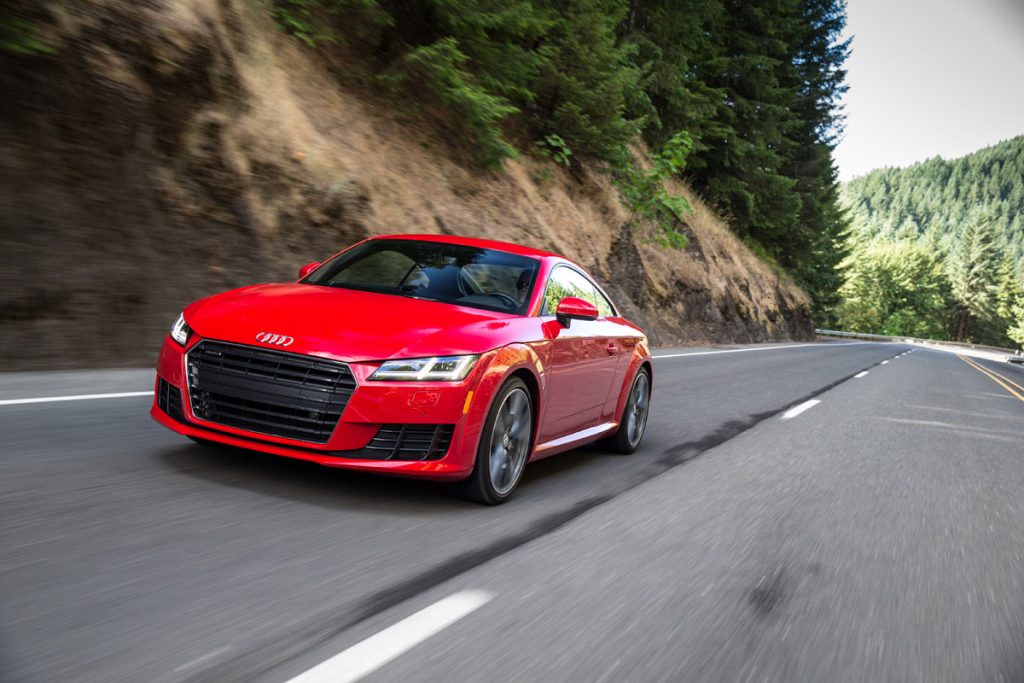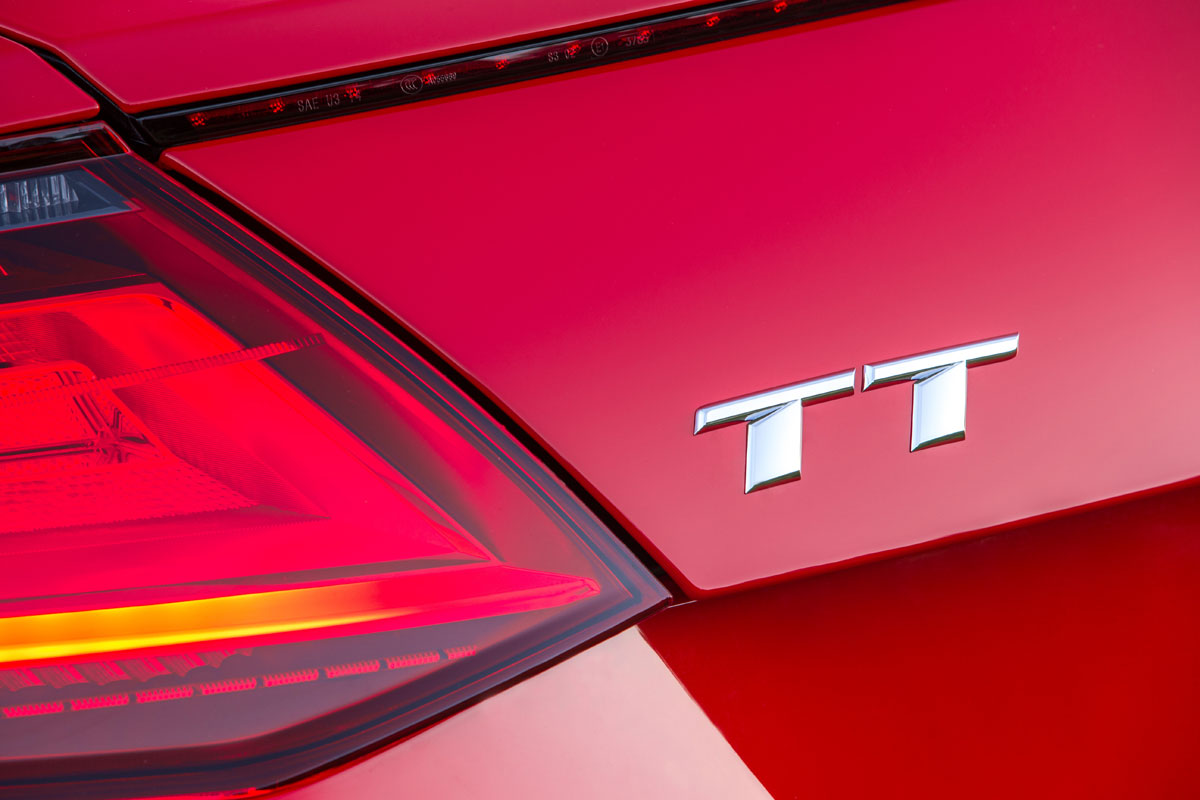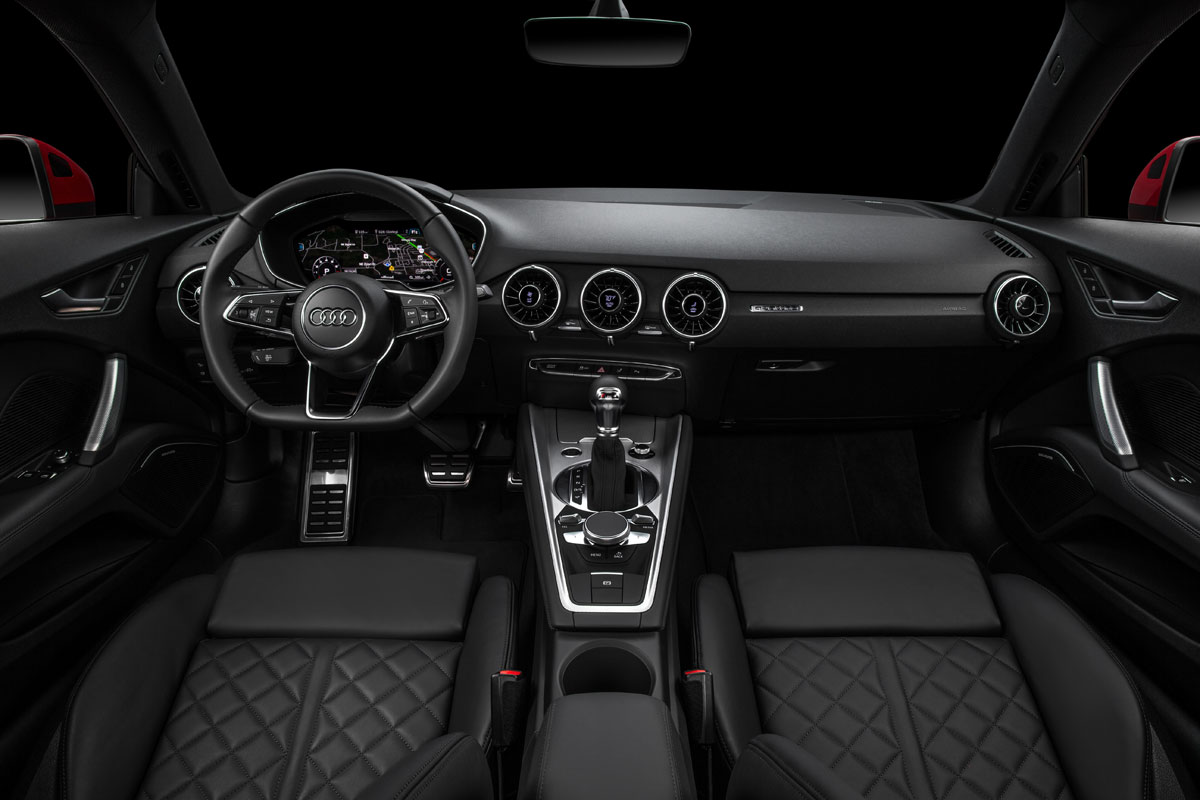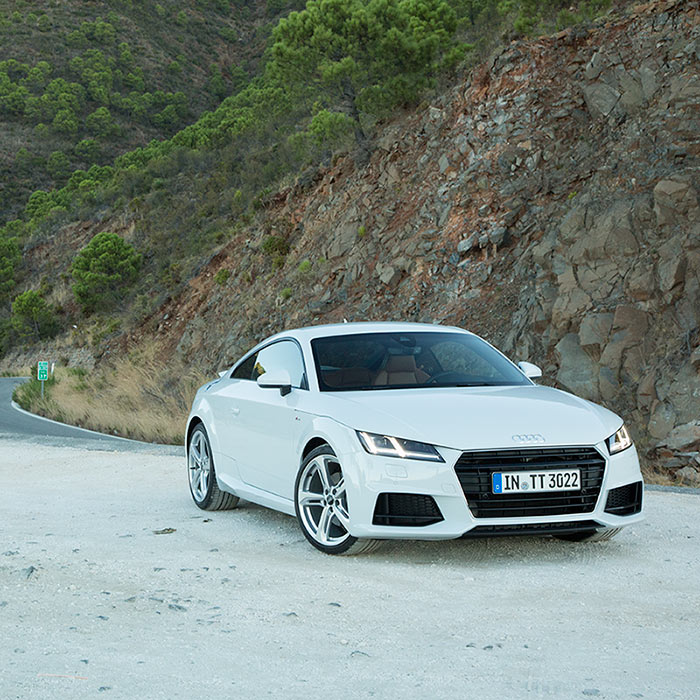Test Drive: 2016 Audi TT
The brand’s compact sprinter gets an impressive update

Recently, on the outskirts of Portland, Oregon, we were lucky enough to test drive Audi‘s latest iteration of their miniature masterpiece. The 2016 Audi TT redesign goes beyond form and has been endowed with significant updates in technology. Derived from the same platform originally developed for the VW Golf Mach 1, it can be configured as FWD or AWD and uses a front-mounted transverse engine. Audi says the TT is not a sports car, but a sportscar and all models are required to carry forward its sportscar DNA and iconic design—as well as add revolutionary technology.

Our drive day in the new TT coupe consisted of close to 200 miles of sheer motoring pleasure, piloting it along a carefully-chosen collection of roadways, including a course of tight, twisting and undulating two-lanes. Having time in the previous two generation models, it’s fair to say that performance upgrades combined with updates to the AWD system endow the new model with a more sporting character—torque can be distributed up to 100% to either the front or rear wheels, in concert with stability control, magnetorheological dampers, throttle position and steering angle. During hard cornering, the wheels closest to the apex are momentarily decelerated to aid with turn-in and to reduce understeer.

Drivers will immediately recognize the new TT from outside as the high-speed sprinter keeps its iconic shape, but also has some refinements that modernize its fully aluminum body. The three-box design keeps its top one-third as its slightly stretched upper cabin and the bottom two-thirds as the body that wears a look of motion more than the previous more bubbled shape. The fascia borrows DNA from Audi’s R8 and carries over the trademark Singleframe grille has had its edges knocked off to give it a more hexagonal shape with the traditional brushed black horizontal slats. Head- and tail-lights are fully LED with dynamic turn signals, with a stunning double vertical light pattern in front. Other features and cues include standard 18-inch five-twin-spoke alloy wheels, dual chrome-tipped exhaust ports, and a retractable rear spoiler. The cloth-top roadster comes with Aluminum-Optic trimmed roll-bars. The TTS coupe (first introduced in 2008) is set off with a Platinum Gray grille trim, a lower fascia and side-sill trim, and a unique bumper/ diffuser. The upgrades seem endless: 19-inch five-spoke blade alloy wheels, Aluminum-Optic side mirror housing, quad exhaust outlets, plus the TT’s electric spoiler and LED lights.

Inside, tech updates rule. Whereas many automakers are adding at least one, if not two, screens to the dash, the German automaker has embodied its motto of “Progress through Technology” (or “Vorsprung durch Technik”) and done away with the centered audio panel. Audi’s innovative virtual cockpit is a 12.3-inch display that replaces the traditional gauge cluster-located behind the steering wheel. With NVIDIA technology, the display is visible in varying light and can still be seen from the passenger seat, where a center console dial gives the right-seat rider control over navigation, audio and more. Two modes are available in the TT and three with the TTS to select: Classic gives a more traditional view of speedometer and tachometer, Progressive mode shows Classic with navigation added, while the TTS Sport mode displays the tachometer in the center and reports performance statistics.

Audi’s MMI system comes with two USB ports, one auxiliary input, single disc, AM/FM and satellite radio with phase diversity for better reception, and Bluetooth connect—all are standard. Standard is a188-watt nine-speaker sound system, with an optional Bang & Olufsen 680-watt twelve speaker surround sound. Options include the MMI Navigation and Audi Connect, plus a complementary six-month subscription trial. Audi Connect MIB-2 infotainment system brings 4G LTE connection and as assists with voice recognition, map updates, and INRIX XD Traffic.

Quattro and other drive attributes behave differently depending on the drive mode, offering settings that let you motor in Comfort, Auto, Dynamic or Custom; it’s a car-lover’s dream team, allowing your different personalities to have their way—with loud exhaust notes and burbles when downshifting at speeds that can reach 160mph or contented cruising listening to tunes on the Bang & Olufsen sound system.
Under the hood both TT and TTS are motivated by a 16- valve 2.0-liter TFSI engine with a six-speed S tronic transmission; the TT’s set up produces 220-horsepower and 258-pound feet; the TTS pumps out 292-horsepower and 280-pound feet. The dual-clutch transmission can be shifted via a driver-selectable manual mode and with paddle shifters. All produce pretty snappy zero to 60 times, the Coupe and Roadster clocking in at 5.3 and 5.6 seconds respectively. The TTS moves a tick faster, with a 4.6 second time.

MacPherson struts keep the car lighter, as does the aluminum sub-frame and the large ventilated front disc/solid rear brakes provide mannered and enthusiastic stopping power when drivers stretch the throttle. This Bavarian-born, Hungarian-built coupe is everything that past generations have been and more—it seems Audi has hit the mark once again.
Available as a four-seater coupe or two-passenger roadster body, all TTs come Quattro as standard issue. The coupe starts at $42,900 and the roadster at $46, 400; it will also be available soon dressed as the more sizzling TTS Quattro coupe that will be priced starting at $51,900-a roadster will follow later.
Images courtesy Audi












